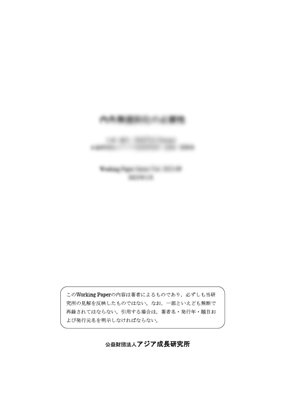Recent Trends and Price-Cost Margins in Japan’s Iron and Steel Industry

| 執筆者 | Atsuko Matsuoka |
|---|---|
| 発行年月 | 2002年 3月 |
| No. | 2002-32 |
| ダウンロード | 370KB |
内容紹介
This paper investigates the sources of profitability changes in Japan’s iron and steel industry during 1980-1999 by decomposing the price-cost margin into value added factor, intermediate materials factor, and labor factor. The first major finding is that price-cost margins in Japan’s iron and steel industry in the 1980s increased mainly due to the positive contribution of value added, and it decreased in the 1990s mainly due to its negative contribution. It also should be noted that this negative effect was larger with the five major steel makers (Nippon Steel, NKK, Kawasaki Steel, Sumitomo Metal Industries, and Kobe Steel), which was accompanied with a decline of their value added share in Japan’s iron and steel industry. The second, when the growth rate of total sales were decomposed into price and quantity factors in both domestic and export markets, the decrease of the domestic price factor turned out the major cause to reduce total sales in the 1990s. The decrease of export price factor also reduced total sales, whereas export quantity factor had effects to increase total sales. However, those export factors were very small compared with the negative domestic price factor. Considering those findings and the fall of domestic steel prices in the 1990s, Japan’s iron and steel industry might have less market power with more competitive product markets than expected.
